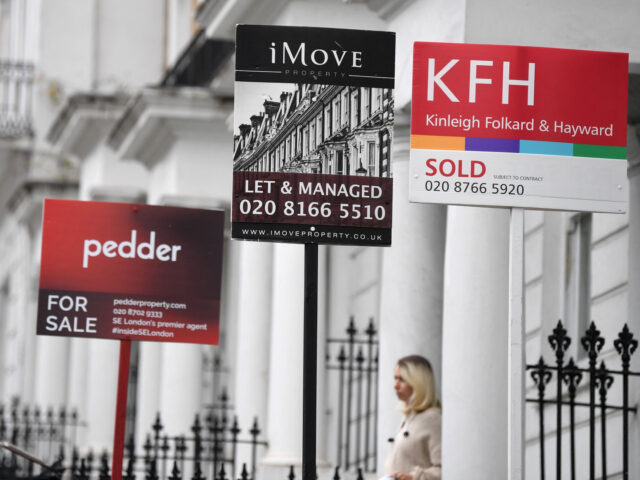The average weekly price for London residential rentals climbed to a record high in October, with high prices driven by high demand that in no small part is a result of open borders sustained by successive Conservative governments.
According to an analysis from estate agency Foxtons, residential tenants in the British capital were paying an average of £571 ($679) a week or £2,284 ($2,717) per month. This was a jump from the previous record set in September when renters were paying an average of £553 per week, which is notable they say as prices typically begin to fall by October.
The largest increase was seen in Central London, which saw rents spike by nearly 30 per cent over last year to an average of £643 ($765).
“Competition for London lettings is intense,” Foxtons’ lettings managing director Gareth Atkins said per Yahoo UK Finance. “We’re seeing a return to renters spending over their registered budget at 101% on average — a number we haven’t seen since before the pandemic.”
While the corporate press often attributes rising housing costs in Britain to a lack of new houses being constructed — with even Tom Harwood of the notionally conservative GB News network declaring in June that there is no other solution to the housing crisis but to build more homes — little attention is given to the other side of the supply and demand issue, namely the impacts of mass migration on demand for real estate.
Indeed, while the British capital constructed on average 30,000 new homes per year between 2011 and 2021, this was dwarfed by the population increases in London, which during the same time saw an increase of 626,000 to its population, increasing by 7.7 per cent to a total of 8.8 million residents.
Even when discounting the impacts of second-generation immigration on population growth — which the Census has yet to reveal — according to the latest census conducted last year, 40.6 per cent of the population of London was foreign born, compared to 36.7 a decade prior.
Commenting to Breitbart London, Migration Watch UK Chairman Alp Mehmet said: “Young people are struggling to get on the housing ladder, while affording rent and a deposit to purchase a home have become monumentally difficult. This as the government has allowed immigration to skyrocket to all-time record levels.
“Official research shows that immigration makes housing more expensive. And our analysis of household projections suggests England needs to build a home every five minutes just to cope with the impact of new arrivals from overseas.
“If the government is serious about helping working people as our bills and taxes shoot up, then it needs to honour its promises and cut immigration by a lot now.”
While the governing Conservative party vowed to reduce migration to Britain following Brexit, the opposite has occurred. As a result of Boris Johnson’s points-based immigration system a record 1.1 million visas were granted to foreign nationals in the year leading up to June. It is expected that this year will see net-migration soar to upwards of 300,000 this year, a far cry from the tens of thousands the party previously promised.
Overall, the population in England and Wales rose to the highest level in recorded history in 2021, increasing by 3.5 million from 56 million to 59.6 million since 2011, with a clear majority of this population growth being a direct result of immigration.
The foreign-born population, which now stands at a record one in six residents in England and Wales, came in large part due to mass migration from India. Indeed, out of the 10 million foreign residents, 920,000 were born in India, representing about 1.5 per cent of the total population of England and Wales.
Nevertheless, Prime Minister Rishi Sunak, seems intent on growing immigration further, apparently in line with the longstanding treasury orthodox that migration equals economic growth. On Tuesday, Sunak agreed to a mini-deal on visas with Prime Minister Modi to open the door to Indian middle-class “young professionals” to Britian, in what has been described as an olive branch in the trade talks.
“I know first-hand the incredible value of the deep cultural and historic ties we have with India. I am pleased that even more of India’s brightest young people will now have the opportunity to experience all that life in the UK has to offer – and vice versa – making our economies and societies richer,” Sunak said.
The mass migration agenda put forward by the PM, who is also reportedly seeking to introduce a “growth visa“, is largely in line with the corporate elites in the UK, with the Confederation of Business Industry (CBI) last month calling on the government to remove more barriers to migration which they described as “genuine barriers to growth.”
While the lower wages that result from the massive influx of cheap foreign labour under extraction migration may be good for the “growth” of business stocks, the same cannot be said for the wages of Britons, which have remained largely stagnant over the past two decades, further compounding the issues facing younger generations wishing to enter into the increasingly unaffordable property market.
Follow Kurt Zindulka on Twitter here @KurtZindulka

COMMENTS
Please let us know if you're having issues with commenting.